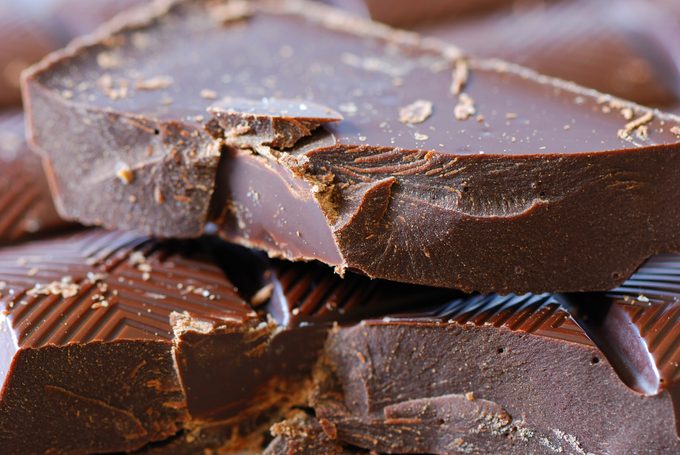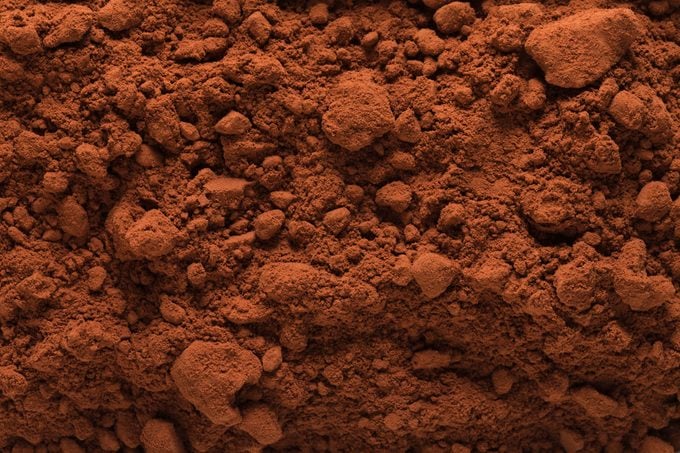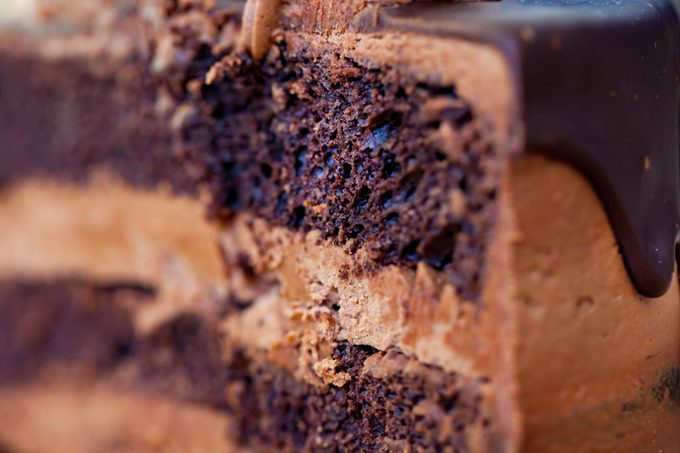New Tests Reveal Some Popular Holiday Chocolate Treats Have Shockingly High Levels of Lead
Updated: Jan. 21, 2024

Consumer Reports' investigation included hot cocoa mixes, cake and brownie mixes, and dark and milk chocolates from prominent brands including Hershey’s and Starbucks.
The holiday season is synonymous with cooking, baking, and indulging in delicious treats. While treating yourself is a delightful part of the festivities, if chocolate holds a special place on your menu, it’s worth examining the brands you choose this year. In a recent report, Consumer Reports delved into seasonal favorite dessert ingredients and mixes to investigate the presence of heavy metals associated with certain types of chocolate. The findings revealed that one-third of the products examined exhibited worrisome levels of heavy metals, posing a potential risk to some consumers.
Last year, Consumer Reports made headlines when it revealed that several well-known and well-loved chocolate bar brands contained concerning levels of lead and cadmium. This year, the focus turned to popular chocolate-containing products associated with holiday festivities, examining their levels of lead, cadmium, mercury, and arsenic. The investigation encompassed hot cocoa mixes, cake and brownie mixes, and dark and milk chocolates from prominent brands including Hershey’s, Ghirardelli, Starbucks, Costco, and Trader Joe’s. The findings indicated worrisome concentrations of potentially toxic heavy metals in various products at common serving sizes.
Lead levels pose particular concerns due to the potential to harm small children and developing fetuses in smaller increments, potentially leading to damage to the brain and nervous system, among other issues. However, excessive levels can also impact adults, considering the presence of toxic metals in other foods, leading to cumulative effects in the body. If you’re a chocolate lover, you might often exceed common serving sizes without thinking about it. For instance, tests on chocolate chips were conducted based on a standard serving found in a couple of cookies, about a tablespoon. However, if consumed in larger quantities or used in applications like glazes or fondue, the overall exposure could significantly increase. In the case of brownies and cake, multiple servings during the holiday season could result in a doubling or tripling of exposure.
James E. Rogers, Ph.D., director and head of product safety testing at Consumer Reports, highlighted, “Every product we tested had detectable amounts of lead and cadmium.” 16 out of 48 products exceeded Consumer Report’s levels of concern for at least one heavy metal, with some surpassing the limit by more than twice. Nonetheless, there were safer options identified in each chocolate product category. Fortunately, none of the tested products exhibited concerning levels of arsenic or mercury.
New Report: These Top 5 ‘Superfoods’ Are Causing Unexpected Side Effects
Milk chocolate products generally performed better due to their lower cocoa solids content. Eric Boring, Ph.D., a Consumer Reports chemist, explained, “In general, products with higher cocoa content tend to have higher levels of metals, but not always.” This variability is attributed to the cocoa beans absorbing cadmium from the soil during growth and lead settling on the beans during drying, potentially during shipping, processing, and manufacturing. Boring suggested that companies can take steps to reduce these levels, emphasizing the potential for manufacturers to minimize heavy metal content in their products.
While federal limits on heavy metal levels in products are surprisingly absent, Consumer Reports adopted California’s safety standards for evaluation. Products were ranked based on the percentage by which they exceeded or were below these levels, utilizing three samples. None of the milk chocolate products tested surpassed these levels.
It’s noteworthy that the FDA, in response to Consumer Reports, expressed limited concern about the lead and cadmium levels in cocoa products, stating, “While the presence of cadmium and lead in chocolate has been the subject of considerable media attention, experts from around the world have found that chocolate is a minor source of exposure to these contaminants internationally.” A spokesperson for the National Confectioners Association reassured, “Chocolate and cocoa are safe to eat and can be enjoyed as treats, as they have been for centuries.”
Here are the products with the highest levels of contamination from Consumer Report’s list and the lowest with the suggested serving size. Take a look at the complete list to see how other products fared.
Fruit Recall Grows Across 32 States, Claiming 2 Lives in One Region

Dark Chocolate
Serving size: 1 ounce.
Highest
- Divine 85% Exquisitely Smooth Dark Chocolate
- Lead: 120%
- Cadmium: 56%
- Evolved Signature Dark 72% Cacao Chocolate Bar
- Lead: 236%
- Cadmium: 149%
- Perugina 70% Premium Dark Chocolate
- Lead: 314%
- Cadmium: 82%
- Perugina 85% Premium Dark Chocolate
- Lead: 539%
- Cadmium: 68%
Lowest
- Sam’s Choice (Walmart) Dark Chocolate 85% Cocoa
- Lead: 43%
- Cadmium: 99%
The FDA Wants To Ban a Popular Soda Ingredient That’s Already Outlawed on 3 Other Continents
Chocolate Chips
Serving size: ½ ounce.
Highest
- Good & Gather (Target) Semi-Sweet Mini Chocolate Chips
- Lead: 102%
- Cadmium: 9%
- Hu Dark Chocolate Gems
- Lead: 121%
- Cadmium: 20%
Lowest
- Ghirardelli Premium Baking Bittersweet Chocolate Chips 60% Cacao
- Lead: 29%
- Cadmium: 57%
- Nestlé Toll House Semi-Sweet Morsels
- Lead: 36%
- Cadmium: 37%
I Ate Chocolate Every Day for a Week—Here’s What Happened

Cocoa Powder
Serving size: 1 tablespoon.
Highest
- Hershey’s Cocoa Naturally Unsweetened 100% Cacao
- Lead: – 125%
- Cadmium: – 18%
- Droste Cacao Powder
- Lead: – 324%
- Cadmium: – 41%
Lowest
- Navitas Organics Organic Cacao Powder
- Lead: 77%
- Cadmium: 17%
- Nestlé Toll House 100% Pure Cocoa
- Lead: 77%
- Cadmium: 66%
Here’s What You Need to Know About the Health Benefits of Chocolate
Hot Chocolate Mixes
Serving size: Varies by product.
Highest
- Nestlé Rich Milk Chocolate Flavor Hot Cocoa Mix (1 Tbsp)
- Lead: 108%
- Cadmium: 10%
- Trader Joe’s Organic Hot Cocoa Mix (1 envelope)
- Lead: 112%
- Cadmium: 88%
- Starbucks Hot Cocoa Classic (1 envelope)
- Lead: 159%
- Cadmium: 44%
- Great Value (Walmart) Milk Chocolate Flavor Hot Cocoa Mix (3 Tbsp.)
- Lead: 345%
- Cadmium: 13%
The Healthy Hot Chocolate Recipe This Nutritionist Loves

Brownie and Cake Mixes
Serving size: One serving of the finished cake or brownie.
Brownies
Highest
- Ghirardelli Premium Brownie Mix Double Chocolate (16 servings per box)
- Lead: 108%
- Cadmium: 37%
Lowest
- Betty Crocker Fudge Brownie Mix (18 servings per box)
- Lead: 34%
- Cadmium: 13%
Here’s How Long Milk Really Lasts—and How to Maximize Its Shelf Life
Cakes
Highest
- Simple Mills Almond Flour Baking Mix – Chocolate Muffin & Cake (12 servings per box)
- Lead: 127%
- Cadmium: 34%
- Bob’s Red Mill Gluten Free Chocolate Cake Mix (11 servings per package)
- Lead: 218%
- Cadmium: 77%
Lowest
- Great Value (Walmart) Devil’s Food Chocolate Cake Mix (10 servings per box)
- Lead: 52%
- Cadmium: 23%
- Pillsbury Devil’s Food Premium Cake Mix (10 servings per box)
- Lead: 58%
- Cadmium: 28%
- New Research: Eating Breakfast at This Hour Lowers Weight and Blood Pressure
- New Study: If You Mix These 2 Beverages, You’re Wrecking Your Sleep Health
- Here’s How Long It Takes Taste & Smell to Return After You’ve Had COVID, Says New Study
- New Research: Using Your Cell Phone This Many Times Each Day Can Seriously Harm Fertility
















